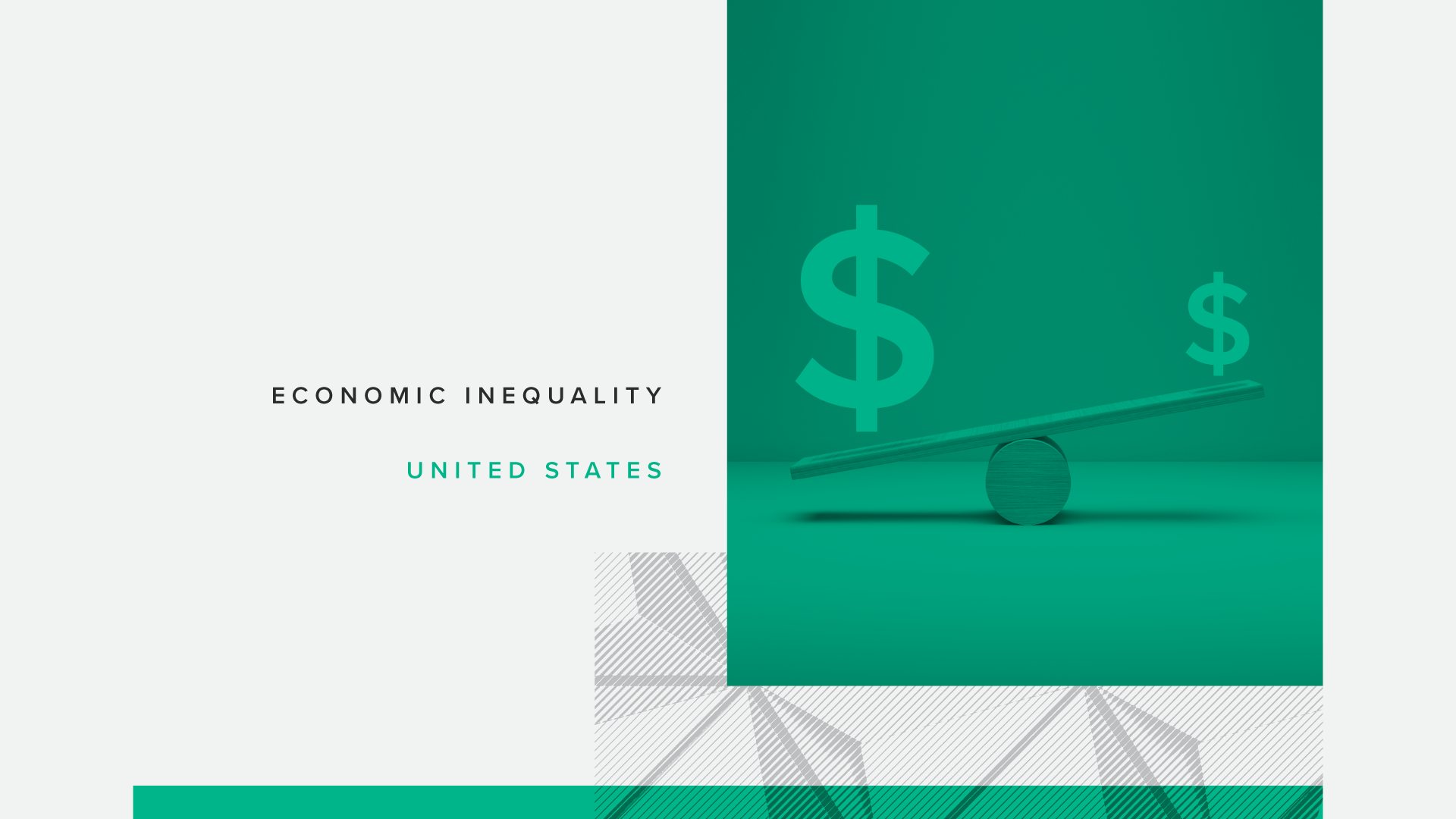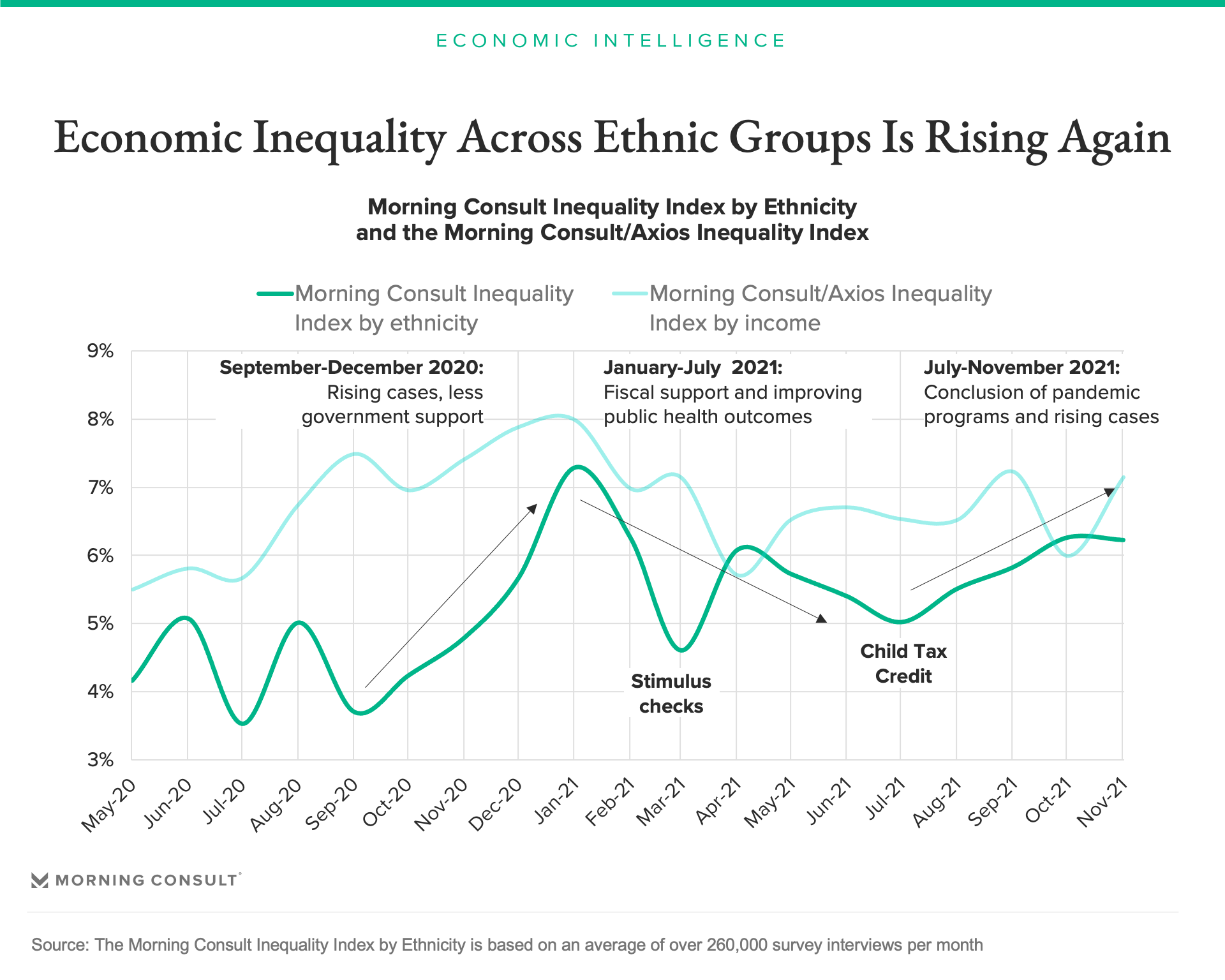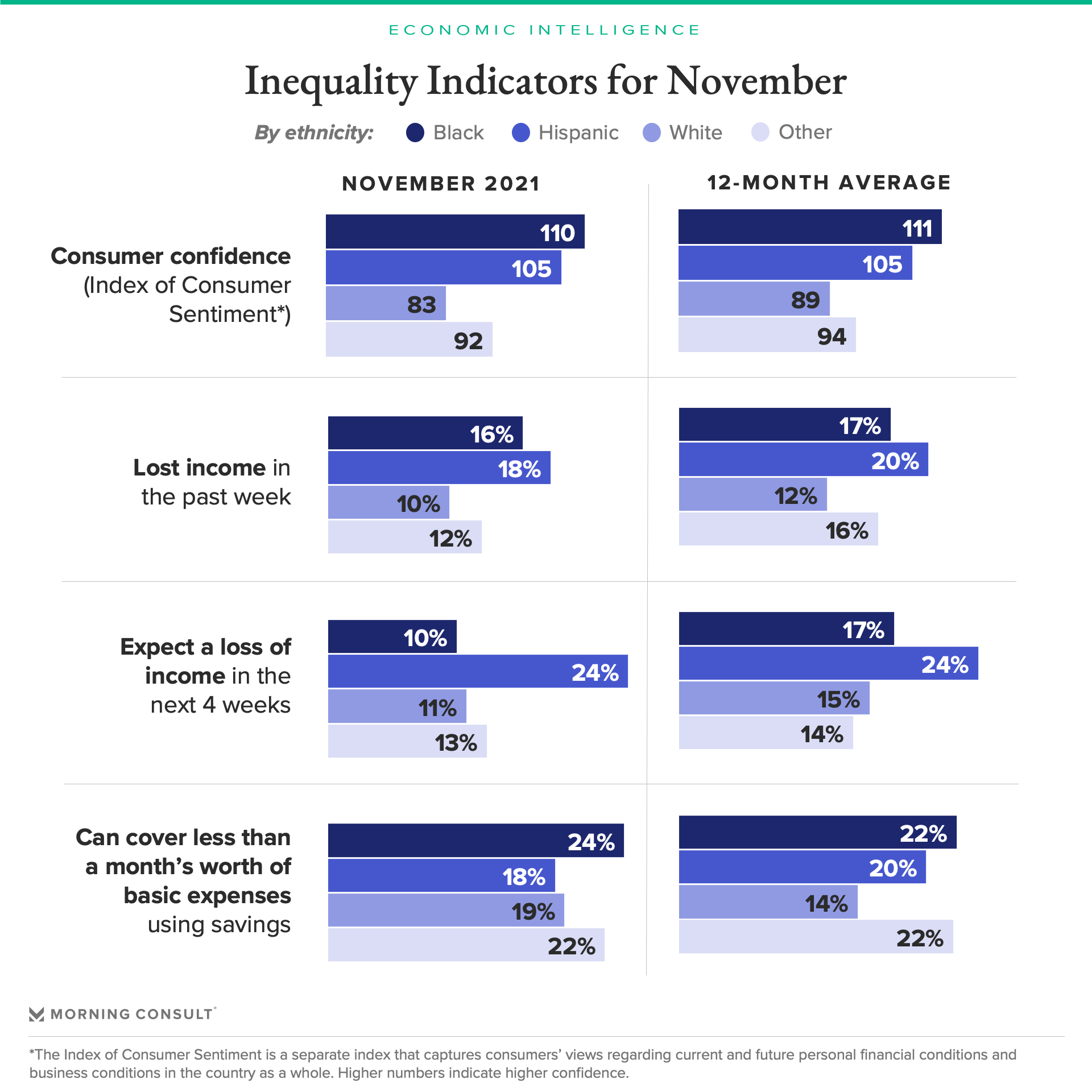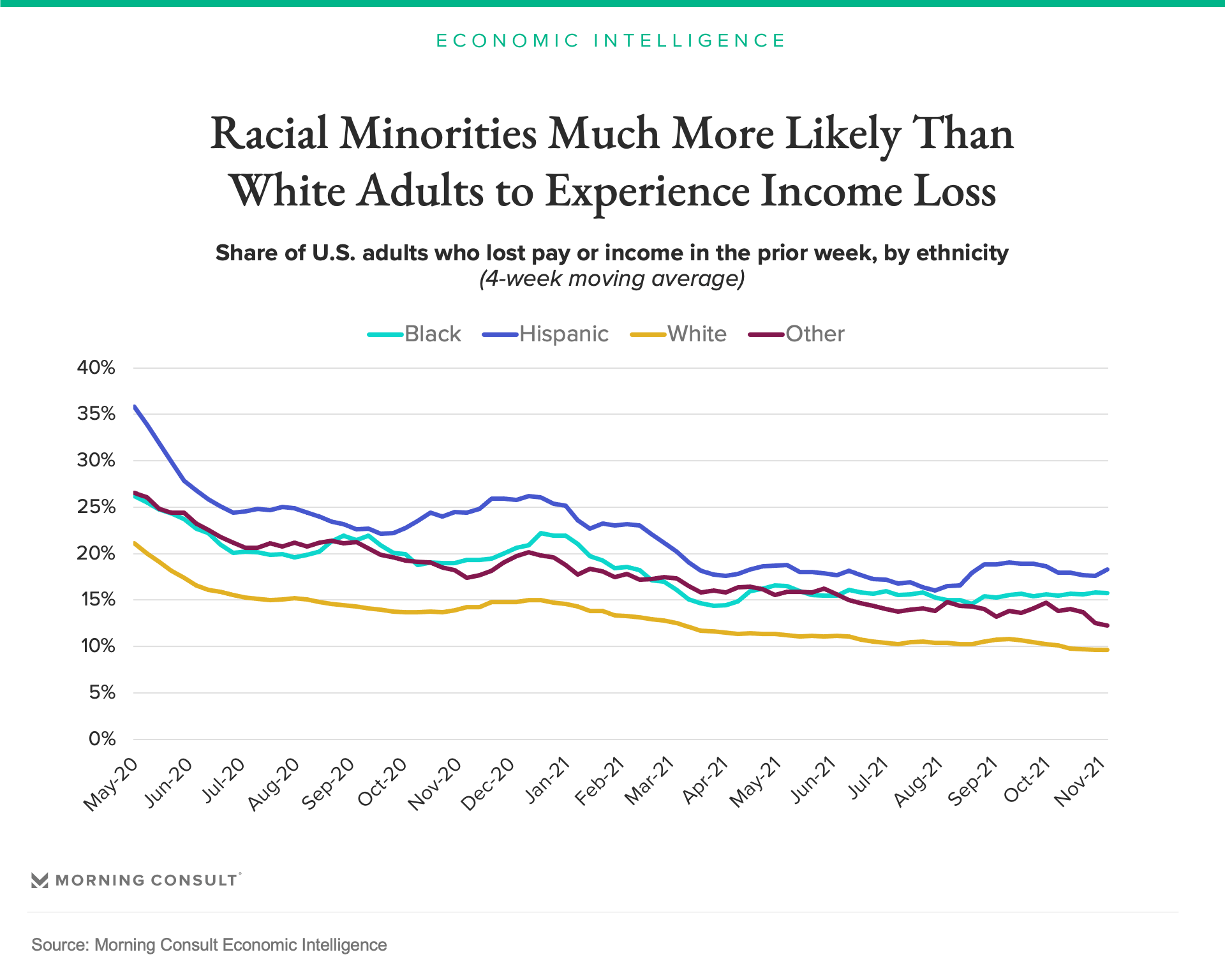Policy Response Instrumental in Shaping the Pandemic’s Impact on Inequality

Key Takeaways
The pandemic laid bare the economic inequalities across ethnic groups in the United States, with the crisis often disproportionately impacting the most vulnerable.
The U.S. fiscal response played a key role in dampening these effects, and has helped shape inequality during the recovery, as tracked by Morning Consult’s Index of Economic Inequality by race and ethnicity.
Moving forward, employment outcomes will be critical for narrowing economic inequality, potentially prompting the Federal Reserve to take a relatively dovish course as it views employment through the lens of the new monetary policy framework outlined in 2020.
From the onset of the coronavirus pandemic, minority groups across the United States were more likely to suffer job losses than their white compatriots, and they were also less likely to have sufficient savings or wealth to cope. In the nearly two years since, a “K-shaped” recovery has seen employment outcomes for high-income and white adults improve faster than those of lower-income workers or minority groups. In addition to concerns regarding equity and sustainability, economic inequality across races has also been shown to reduce economic activity.
While the policies of the U.S. government have helped blunt the impact of the pandemic on inequality, further COVID-19 surges and the conclusion of pandemic programs have once again widened the gap in recent months — a divide that policymakers within the Biden administration and the Federal Reserve will be keen to narrow.
Morning Consult Index of Economic Inequality by Ethnicity
Building on the methodology used to generate the Morning Consult/Axios Inequality Index, this memo investigates the impact of race and ethnicity in explaining differences in lived economic experiences over the past 19 months. While differences across income groups are highly correlated with differences across ethnicities, these two phenomena are far from identical.
The Morning Consult Index of Economic Inequality by ethnicity is based on four indicators: consumer confidence, employment outcomes, employment expectations and financial vulnerability. As gaps between ethnic groups on these indicators widen or narrow, the index’s measure of economic inequality consequently rises and falls.

Policy interventions have shaped the pandemic’s impact on inequality
Over the course of the pandemic, Washington’s policy response has been critical in shaping the impact of the pandemic across demographic groups in the United States. Curbing inequalities across incomes and demographics has been the focal point of policies ranging from unemployment insurance to eviction moratoriums and the Child Tax Credit, with the impact of these measures captured by Morning Consult’s inequality indices.
Looking at economic disparities across ethnic and racial groups, we see a sharp increase in inequality during the COVID-19 wave in the fall of 2020. Moving into 2021, the renewal of expanded unemployment benefits, additional stimulus measures and improvements in combating the pandemic helped reduce these inequalities across the board during the first half of the year. The impact of stimulus checks can also be seen clearly in the data from March 2021, when the $1,400 dollar checks led to a drop in financial vulnerabilities across demographic groups.
Since July, however, racial and ethnic inequality has once again increased, reflecting an uptick in job losses associated with the delta variant and the conclusion of pandemic programs such as enhanced federal unemployment insurance.
Minority groups are more vulnerable to economic volatility
As captured by the index, minority groups are generally more likely than white adults to experience pay losses, harbor fears of pay losses and lack savings to cover basic expenses. For example, the share of Black and Hispanic adults who had sufficient savings to cover their basic expenses for less than a month averaged 22 percent and 20 percent, respectively, over the past 12 months, compared to 14 percent of white adults. Black and Hispanic Americans were also much more likely to expect pay losses, with an average of 17 percent of Black adults and 24 percent of Hispanic adults fearing a loss of income over the last 12 months, compared to 15 percent of white adults.

On the other hand, minority groups have rated higher in consumer confidence compared to white adults over the last 12 months, as sentiment among the latter group has been slower to recover after falling further at the beginning of the pandemic. This disparity is largely a result of factors such as political views and the relative benefits of pandemic programs.
Narrowing the gap in employment outcomes
Despite broad gains in recent quarters, a large gap still exists in employment outcomes across demographic groups. Over the four-week period ending Nov. 20, 16 percent of Black adults and 18 percent of Hispanic adults experienced a loss of pay or income, compared to 10 percent for white adults.

A tight labor market will be crucial in driving wages higher and improving economic outcomes for the average American. More specifically, narrowing the gap in employment outcomes will help extend the benefits of the recovery across demographic groups. Policymakers have repeatedly pointed this out, and the Federal Reserve has now brought inequality reduction squarely into its remit.
While keeping a lid on rising inflation will be a central focus at the Fed in the near term, Chairman Jerome Powell will also be viewing any policy decisions in his second term through the Fed’s new monetary policy framework, which redefined “maximum employment” to be “broad-based and inclusive.” When thinking about when to adjust rates, policymakers will consider metrics like the Black unemployment rate. Therefore, persistent gaps in economic and employment outcomes could lead the Fed to delay the timing of rate increases even if job growth for the broader population continues.
Jesse Wheeler previously worked at Morning Consult as a senior economist.